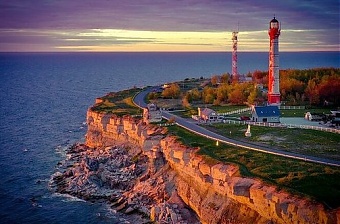Analytics, Ecology, Estonia, EU – Baltic States, Legislation
International Internet Magazine. Baltic States news & analytics
Monday, 17.11.2025, 21:35
State of Estonia's biodiversity better than European average
 Print version
Print version |
|---|
According to the report, the largest number of obstacles to achieving a favorable status in the European Union are related to agriculture, significant reasons also include the effects of urbanization and recreation, and the third biggest influence is forestry, the Ministry of the Environment said.
In addition, pollution is important, most of which, about half, comes from agriculture. Illegal bird hunting is also an important problem from the European perspective.
According to the report, the European Union has come closest to its target with non-bird species with regard to the Birds and Habitats Directives -- a 12% gap remains to achieve the target for habitats, a 20 percent gap remains for bird species and only a 2% gap remains for non-bird species.
In Estonia, biodiversity trends are broadly the same as in Europe, although the status of Estonian habitats and species is better than the European average. Forests, heritage meadows and also marshes are in the worst condition also in Estonia.
The most common reasons in the report on Estonia are drainage -- both agricultural and forestry drainage --, felling and cessation of grassland management, as well as changes in the species composition of communities, agricultural pollution and changes in water bodies.
Data on Estonia show that 57% of habitats are in favorable condition, 37% in insufficient condition and 7% in poor condition. Of the species living in Estonia, 56% are in favorable condition, 27% are in inadequate condition, 10% in bad condition and the condition of 7% is unknown.
"Based on the results of the report, it can be concluded that Estonia is on the right track with its restoration activities. We are focusing on heritage communities, that is grasslands, which remain rich in species only in cooperation between man and nature, and active restoration of bogs has been going on for 10 years already," Marku Lamp, deputy secretary general of the Ministry of the Environment for wildlife, said. "We will also continue with forest protection."
The report provides an assessment of birds, protected habitats and protected species. The Birds Directive report shows a slight deterioration, with a slightly better situation for habitats and species in the Habitats Directive.
The report clearly shows the important role of the Natura 2000 network. Improvement is mainly shown by those species and habitats that are in the extent of more than three quarters of their total area or population on Natura 2000 sites. Of habitats, semi-natural grasslands and forest habitats are in poor condition the most.
There are at least 215,000 square kilometers of habitats in the European Union as a whole that need to be improved through restoration activities and at least 11,000 square kilometers of areas where habitats need to be restored.
- 26.08.2021 LLC Dizozols Investments finalizes investment attraction deal with Crowdestor with record-high profits
- 30.12.2020 Hotels showing strong interest in providing self-isolation service
- 30.12.2020 EU to buy additional 100 mln doses of coronavirus vaccine
- 30.12.2020 ЕС закупит 100 млн. дополнительных доз вакцины Biontech и Pfizer
- 29.12.2020 В Латвии вводят комендантский час, ЧС продлена до 7 февраля
- 29.12.2020 Latvia to impose curfew, state of emergency to be extended until February 7
- 29.12.2020 Linde Gas открывает завод в Кедайняйской СЭЗ
- 29.12.2020 Number of new companies registered in Estonia up in 2020
- 29.12.2020 Президент Литвы утвердил бюджет 2021 года
- 29.12.2020 В Риге можно изолироваться в трех гостиницах








 «The Baltic Course» Is Sold and Stays in Business!
«The Baltic Course» Is Sold and Stays in Business!

